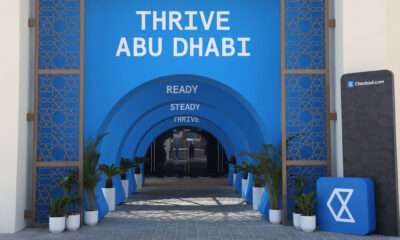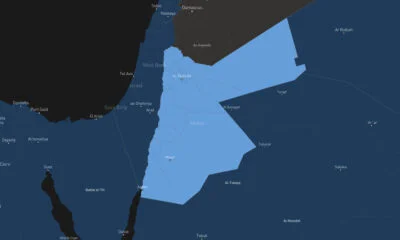News
Saudi Arabia And UAE Are At The Forefront Of An AI Revolution
The AI market in the MENA region is expected to grow at a rate of 47.8% per year.

According to the latest reports from Research and Markets, the MENA region is making significant gains in artificial intelligence, with the AI market set to grow from $500 million in 2020 to $8.4 billion by 2026.
The UAE, in particular, shows great promise as a leader in the field of AI, with a projected growth figure of 36.2% bolstered by the government’s National Artificial Intelligence Strategy 2031, which focuses on attracting talent, funding research & innovation hubs, and developing infrastructure and data ecosystems.
Also Read: ChatGPT Is Accelerating The AI Revolution In The Middle East
With its considerable Public Investment Fund, Saudi Arabia has also announced a $500 billion funding package for AI and other technologies over the next decade, launching initiatives including the Saudi Arabian Data and Artificial Intelligence Authority and the National Data Management Office.
A recent study by global consultancy firm Proviti Middle East showed that over 80% of CEOs in the region believe that AI will be critical to future business success, with over 70% of companies already investing in the technology.
News
Google Releases Veo 2 AI Video Tool To MENA Users
The state-of-the-art video generation model is now available in Gemini, offering realistic AI-generated videos with better physics, motion, and detail.

Starting today, users of Gemini Advanced in the MENA region — and globally — can tap into Veo 2, Google’s next-generation video model.
Originally unveiled in 2024, Veo 2 has now been fully integrated into Gemini, supporting multiple languages including Arabic and English. The rollout now brings Google’s most advanced video AI directly into the hands of everyday users.
Veo 2 builds on the foundations of its predecessor with a more sophisticated understanding of the physical world. It’s designed to produce high-fidelity video content with cinematic detail, realistic motion, and greater visual consistency across a wide range of subjects and styles. Whether recreating natural landscapes, human interactions, or stylized environments, the model is capable of interpreting and translating written prompts into eight-second 720p videos that feel almost handcrafted.
Users can generate content directly through the Gemini platform — either via the web or mobile apps. The experience is pretty straightforward: users enter a text-based prompt, and Veo 2 returns a video in 16:9 landscape format, delivered as an MP4 file. These aren’t just generic clips — they can reflect creative, abstract, or highly specific scenarios, making the tool especially useful for content creators, marketers, or anyone experimenting with visual storytelling.
Also Read: Getting Started With Google Gemini: A Beginner’s Guide
To ensure transparency, each video is embedded with SynthID — a digital watermark developed by Google’s DeepMind. The watermark is invisible to the human eye but persists across editing, compression, and sharing. It identifies the video as AI-generated, addressing concerns around misinformation and media authenticity.
While Veo 2 is still in its early phases of public rollout, the technology is part of a broader push by Google to democratize advanced AI tools. With text-to-image, code generation, and now video creation integrated into Gemini, Google is positioning the platform as a full-spectrum creative assistant.
Access to Veo 2 starts today and will continue expanding in the coming weeks. Interested users can try it out at gemini.google.com or through the Gemini app on Android and iOS.























